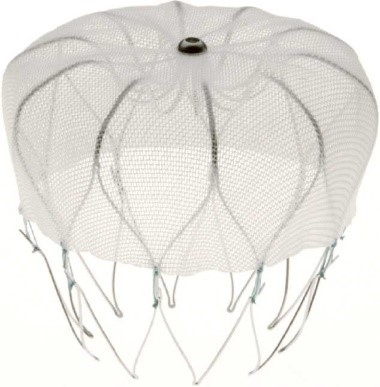The left atrial appendage (LAA) is a small, thin walled structure located on the front of the left atrium. The LAA has no known role in the adult heart. The LAA is the major source of blood clots responsible for stroke or transient ischemic attack (TIA) in patients with atrial fibrillation. In patients with some types of atrial fibrillation and blood clot in the left atrium, the clot was located in the LAA 90% of the time.
Usual Care
For most patients in atrial fibrillation, the usual care is to be on warfarin or a direct oral anticoagulant (DOAC), also known as a blood thinner, to prevent the development of clot in the LAA. Warfarin is a difficult medication to manage, due to the requirement of lab testing, dietary restrictions and interactions, and compliance issues. Being on a blood thinner increases the risk of bleeding, especially in the brain and belly.
Some patients are not candidates for warfarin, or DOAC, or do not wish to take any medications and want a procedure to reduce their risk of having a stroke. Most commonly, these are patients with intolerance to warfarin/DOAC, prior bleeding, or at high risk of bleeding.
Nonsurgical Intervention
Sometimes, the LAA can be closed without by a percutaneous repair and it is done in the cardiac catheterization lab. The procedure will typically take 1-2 hours to complete and requires the use of general anesthesia, meaning you will be asleep and won’t remember the procedure.
Immediately before the procedure, a transesophageal echocardiogram (TEE) is performed to ensure there is no clot in the LAA. If there is clot, the procedure has to be delayed until the clot is broken down as putting catheters to a LAA with clot could lead to a stroke.
A catheter (a small tube) is placed into your vein in your groin and is threaded into your heart. A small poke is made in the septum between the right and left atria in order to get to the LAA. We then size the LAA, select a device, and place it into the LAA. Once the device is in the right spot, is the right size, isn’t moving, and there is no blood leaking around it, we release it.

You will stay overnight in the hospital, then go home the next day after an early morning TTE. You may have to keep taking blood thinners afterwards, this will depend on discussion with your interventional cardiologist.


